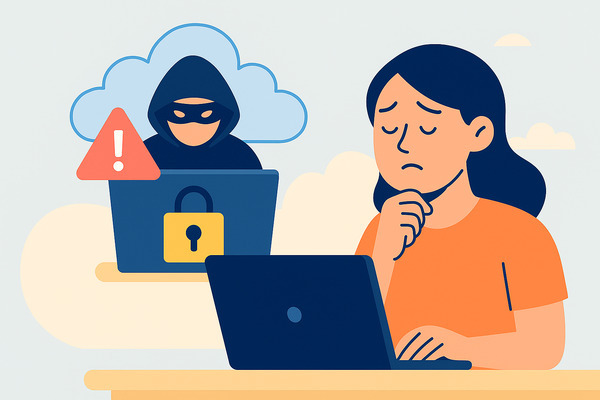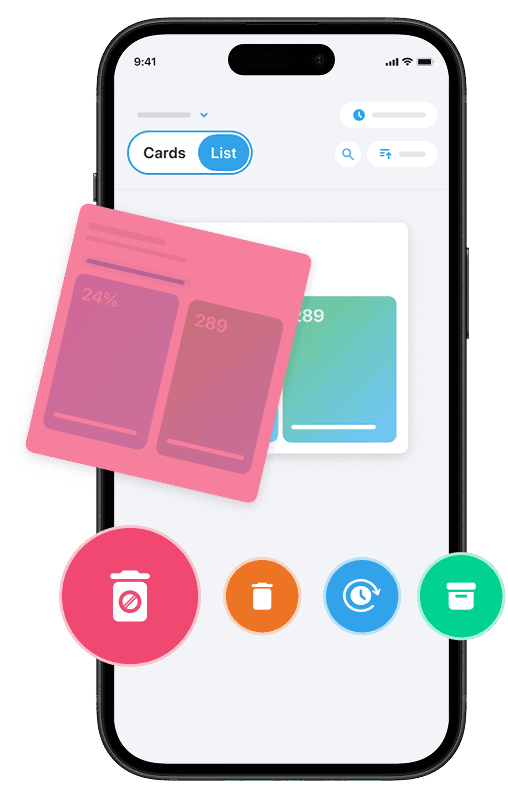Introduction: The Importance of Email Security
Email is indispensable for personal and business communication, but it also serves as a key entry point for cyberattacks like phishing, business email compromise (BEC), and data breaches. To safeguard sensitive information, prevent unauthorized access, and maintain the integrity of your communications, adopting effective email security practices is essential.
As threats evolve, relying on strong passwords alone is insufficient. Implementing multi-factor authentication (MFA), email encryption, secure email gateways, and protocols such as SPF, DKIM, and DMARC adds additional layers of defense. Additionally, regular security awareness training empowers users to identify phishing attempts and other risks, addressing human error—the most common vulnerability in email security.
By integrating these practices, you not only protect your email accounts but also strengthen your overall digital security. This ensures your sensitive data and business communications remain secure against increasingly sophisticated email threats.
One practical step toward better email security is keeping your inbox free from spam and unsolicited messages. To help with that, you can use Cleanfox — our 100% free platform designed to clean and protect your inbox.
Recognizing Common Threats
Phishing Scams
Phishing scams remain one of the most pervasive email security threats, involving deceptive emails designed to trick you into revealing passwords, sensitive data, or clicking on malicious links. These attacks can range from broad, generic phishing attempts to highly targeted spear phishing, which uses personal details to craft convincing messages specifically aimed at you. Another evolving form is lateral phishing, where compromised accounts are used to target your trusted contacts, making malicious emails appear more credible.
Additionally, “quishing” is a growing technique where attackers embed QR codes in emails to direct you to harmful websites or initiate malware downloads without triggering traditional security filters. If you’ve ever wondered what really happens when you open a spam message, check our guide: What Happens If You Open a Spam Email?. Recognizing these phishing tactics is critical to protecting your inbox from unauthorized access and potential data breaches.
Malware and Ransomware
Email remains a favored delivery method for malware and ransomware due to its accessibility and broad reach. Cybercriminals may attach malicious software directly to emails or hide them within seemingly innocent attachments or links.
Once executed, malware can steal sensitive information, disrupt your system with ransomware, or even monitor your activities without your knowledge. To combat this, deploying secure email gateways and preset security policies is essential for scanning and filtering suspicious attachments before they reach your inbox. Staying vigilant about unexpected attachments or unusual requests can help you avoid falling victim to these devastating threats.
Email Spoofing
Email spoofing is a deceptive tactic where attackers forge the sender’s address to make a phishing email appear as if it comes from someone you trust, such as a colleague or a known business. This technique can lead to business email compromise (BEC), where attackers manipulate you into transferring funds or sharing confidential data.
Often, attackers exploit subtle domain impersonation—known as typosquatting—on legitimate domains, making detection difficult without proper safeguards like SPF, DKIM, and DMARC protocols. Being cautious of inconsistencies in the sender’s details and using email security solutions that verify sender authenticity are pivotal in defending against spoofing attacks.
Top 10 Email Security Best Practices
1. Use Strong, Unique Passwords for Email Accounts
Start by creating strong, unique passwords for each of your email accounts to prevent unauthorized access. Avoid reusing passwords across different services, and consider using a reliable password manager to generate and store complex passwords securely. This practice significantly reduces the risk of credential stuffing attacks, where hackers exploit reused passwords across multiple platforms.
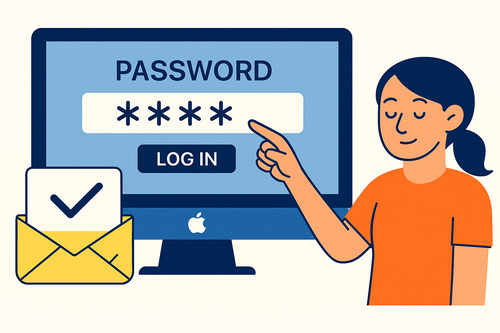
2. Enable Two-Factor Authentication (2FA)
Two-factor authentication (2FA), or multi-factor authentication, adds an extra layer of security by requiring a second verification step besides your password. This might be a code sent to your phone or a biometric scan. Even if your password is compromised, 2FA helps block unauthorized logins, making it one of the most effective defenses against email attacks.
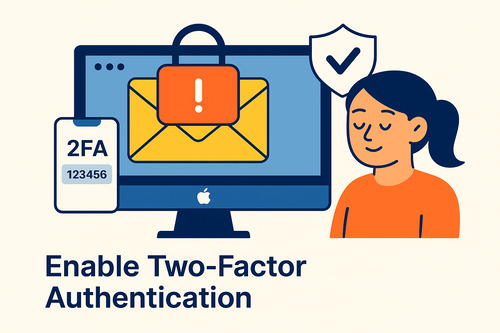
3. Be Cautious of Links and Attachments
Phishing emails often lure you to click malicious links or open dangerous attachments, which can deliver malware or ransomware. Always verify the sender’s identity before interacting with links or downloading attachments, especially if the message urges immediate action or seems unusual.
When in doubt, confirm via a separate communication channel.
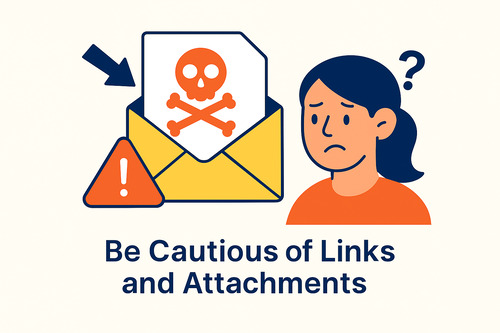
4. Keep Your Email Software Updated
Regularly update your email client, associated applications, and operating system to patch known vulnerabilities. Cybercriminals frequently exploit outdated software to gain access or install malware.
Setting up automatic updates ensures you get the latest security fixes as soon as they are released.
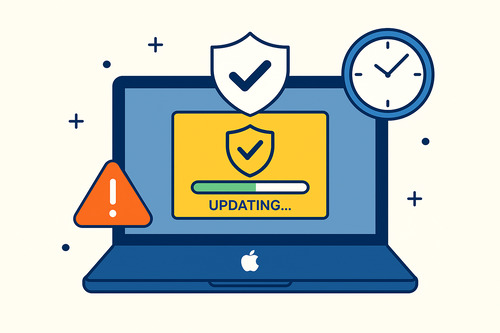
5. Use Secure Wi-Fi Connections
Public Wi-Fi networks can expose your emails and credentials to attackers. To stay safe, always use secure, password-protected networks or consider a virtual private network (VPN) to encrypt your internet traffic when accessing email. Avoid logging into sensitive accounts on unsecured public Wi-Fi to prevent man-in-the-middle attacks.
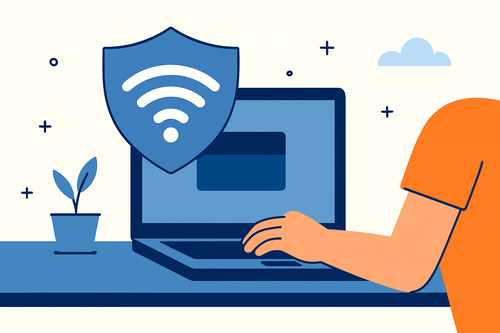
6. Educate Yourself on Email Scams
Regular security awareness training is essential for recognizing and avoiding phishing emails, spoofing attempts, and other scams. Staying informed about the latest email-based threats equips you to identify suspicious messages before they cause harm. This approach fosters a human-centric security strategy that works hand-in-hand with technological defenses.
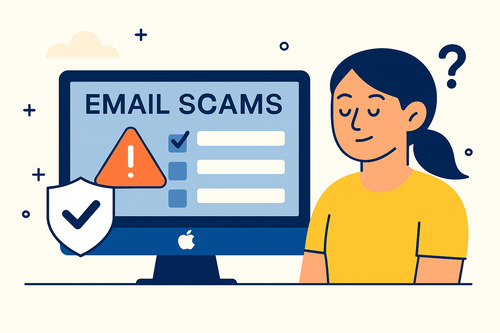
7. Regularly Review Account Activity
Keep an eye on your email account activity to detect any unauthorized access or suspicious actions. Most email services provide logs of recent sign-ins, including geographic locations and devices used. Quickly identifying anomalies allows you to act promptly, securing your account and minimizing potential damage.

8. Use Email Encryption
Email encryption is a powerful tool to protect the content of your messages from unauthorized access during transit or at rest. Use encryption standards like Transport Layer Security (TLS) or end-to-end encryption to ensure that only the intended recipients can read your emails. This helps safeguard your sensitive data from interception or disclosure.
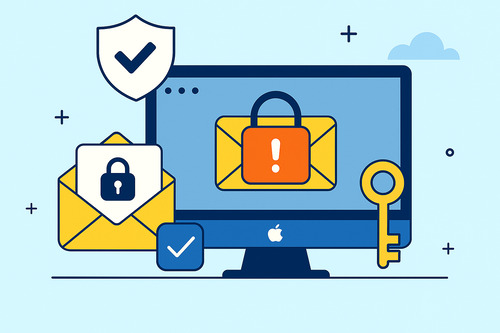
9. Implement Spam Filters
Spam filters are essential for blocking unwanted or potentially dangerous emails from reaching your inbox. By setting up robust spam filtering policies at both the server and client levels, you can strengthen your first line of defense. These filters automatically detect and isolate suspicious messages, reducing your exposure to phishing and malware.
Say goodbye to spam, clutter, and chaos.
Our smart email cleaner filters out junk, organizes your inbox, and helps you focus on what really matters.
✅ Block spam automatically
✅ Organize emails by priority
✅ Keep your inbox clean
✅ Clean old emails you don’t read
📱 Available on the App Store and Google Play.
10. Securely Store and Dispose of Emails
Ensure that sensitive emails are stored securely, and create clear policies for the proper disposal of outdated or unnecessary messages, particularly those containing private information. Utilize secure deletion tools to permanently erase sensitive data from deleted emails. This helps minimize the risk of data loss and prevents unauthorized access to confidential information.
Conclusion: Maintaining Vigilance for Email Security🔎
To keep your inbox safe, remember these essential email security best practices: use strong and unique passwords combined with multi-factor authentication, stay cautious of suspicious links and attachments, and ensure your email software is always updated. Regularly educate yourself about evolving email threats, and leverage tools like encryption and spam filters to protect sensitive data. Additionally, reviewing your account activity frequently can help you detect any unauthorized access early.
By maintaining vigilance and adopting these simple yet effective measures, you empower yourself to safeguard your email accounts and sensitive information against the growing risks of phishing and cyberattacks.
FAQ about Email Security Best Practices🎯
What is a good security practice for email?
A good email security practice involves enabling multi-factor authentication (MFA), using strong, unique passwords managed by a password manager, and employing email encryption. Additionally, avoid accessing email on public Wi-Fi and train users to recognize phishing attempts. Implementing DMARC, SPF, and DKIM protocols further enhances security.
What is the best practice for email security?
The best practice for email security includes enabling multi-factor authentication, using secure email gateways, enforcing strong password policies, and regularly updating and patching systems. Encrypt emails, implement spam filters, and enforce DMARC, SPF, and DKIM protocols. Avoid public Wi-Fi for email access and provide training to help users recognize potential threats.
What is the best way to protect the security of your email account?
Use a strong, unique password for your email. Add multi-factor authentication for extra protection like biometrics or tokens. Keep software updated, disable automatic email forwarding, and use secure email gateways to block threats.
What are the three email safety rules to stay safe?
The three email safety rules are: 1) Use strong, unique passwords and change them regularly. 2) Enable multi-factor authentication to add an extra layer of verification. 3) Avoid opening attachments or links from unknown sources and encrypt sensitive email communications. Additionally, avoid public Wi-Fi for email access.
And that wraps up our Email Security Best Practices guide.
If you want to learn more about protecting your inbox, check out our blog — especially our article “What Is Business Email Compromise? How to Spot and Stop It.“


